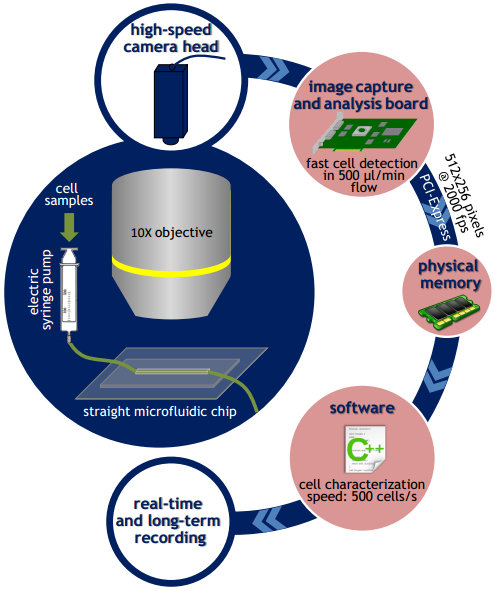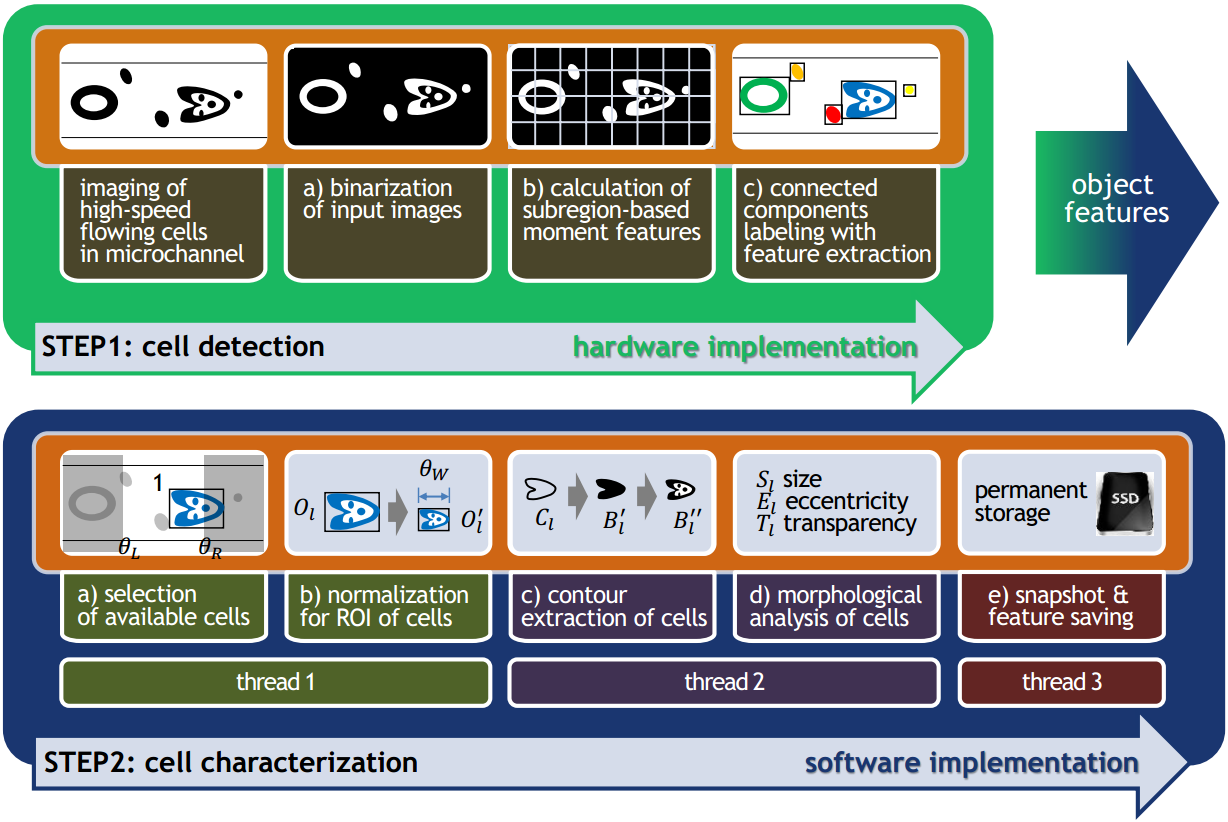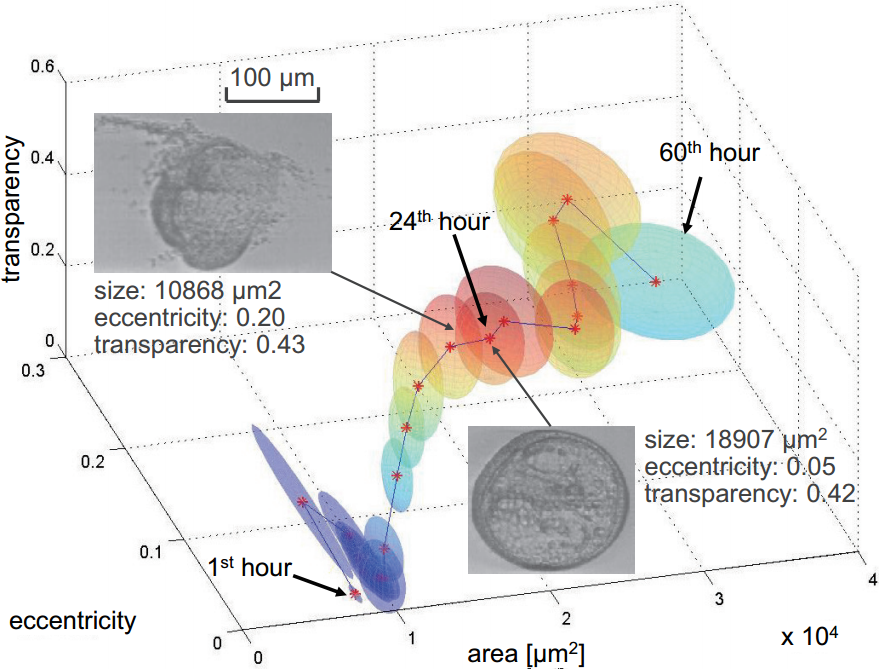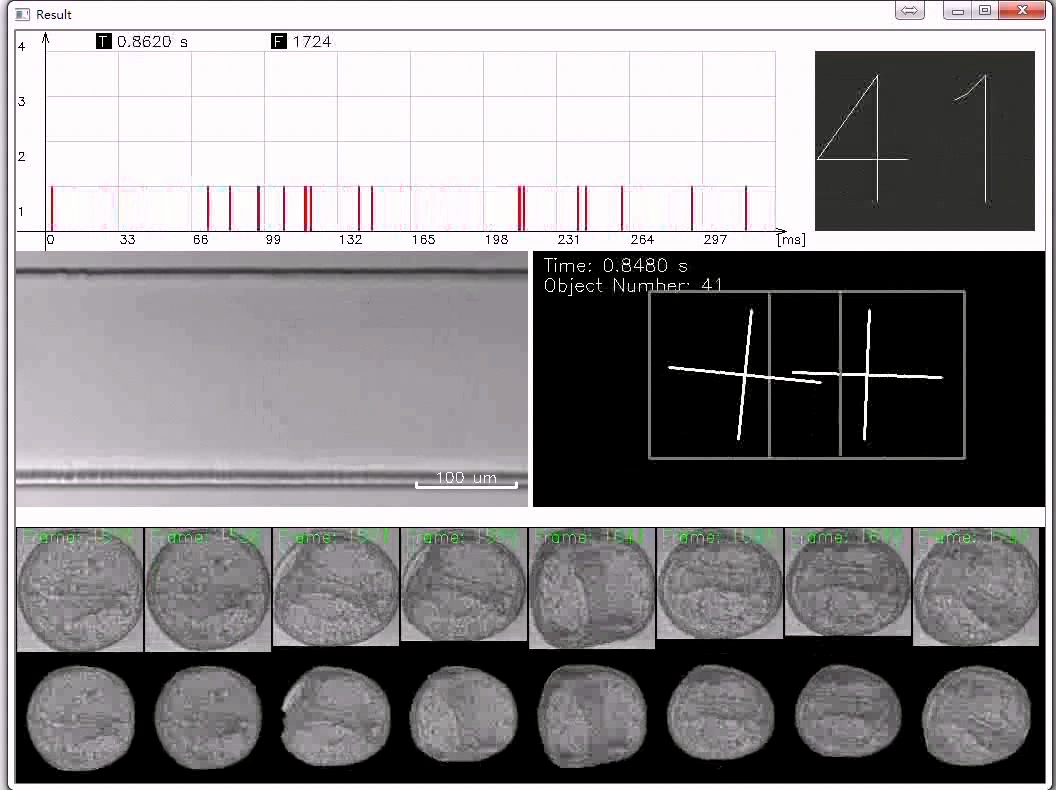RESEARCHES
Smart Vision & Robotic Sensing

Professor, Robotics Laboratory
Smart Innovation Program, Graduate School of Advanced Science and Engineering
Hiroshima University
Smart Innovation Program, Graduate School of Advanced Science and Engineering
Hiroshima University
Idaku ISHII
- >> Research Contents
- In order to establish high-speed robot senses that are much faster than human senses, we are conducting research and development of information systems and devices that can achieve real-time image processing at 1000 frames/s or greater. As well as integrated algorithms to accelerate sensor information processing, we are also studying new sensing methodologies based on vibration and flow dynamics; they are too fast for humans to sense.
Real-Time LOC-based Morphological Cell Analysis System Using High-Speed Vision
In this paper, a high-speed vision-based morphological analysis system for fast-flowing cells in a microchannel implementing a multi-object feature extraction algorithm on a high-speed vision platform is proposed.
Real-time video processing is performed in hardware logic by extracting the moment features and bounding boxes of multiple cells in 512×256-pixel images at 2000 fps. The extracted cell regions are pushed into a first-in-first-out (FIFO) buffer for realtime image-based morphological analysis after being shrunk proportionally to a certain size. By extracting the bounding boxes of the cell regions using hardware logic and shrinking the cell region to a certain size to reduce processing time, our high-speed vision system can perform fast morphological analysis of cells at 2 ms/cell in fast microchannel flows.
The results of real-time experiments conducted to analyze the size, eccentricity, and transparency of fertilized sea urchin eggs fast flowing in microchannels verify the efficacy of our vision-based cell analysis system.
Real-time video processing is performed in hardware logic by extracting the moment features and bounding boxes of multiple cells in 512×256-pixel images at 2000 fps. The extracted cell regions are pushed into a first-in-first-out (FIFO) buffer for realtime image-based morphological analysis after being shrunk proportionally to a certain size. By extracting the bounding boxes of the cell regions using hardware logic and shrinking the cell region to a certain size to reduce processing time, our high-speed vision system can perform fast morphological analysis of cells at 2 ms/cell in fast microchannel flows.
The results of real-time experiments conducted to analyze the size, eccentricity, and transparency of fertilized sea urchin eggs fast flowing in microchannels verify the efficacy of our vision-based cell analysis system.
 |
Fig. 1: Concept of our system. |
 |
Fig. 2: Flow chart of the implemented algorithms. |
 |
Fig. 3: 3D development path of sea urchin embryo from 1 to 60 h after fertilization. |
 |
| WMV movie (13.5M) Demo video for LOC-based morphological cell analysis system |
Reference
- Qingyi Gu, Tomohiro Kawahara, Tadayoshi Aoyama, Takeshi Takaki, Idaku Ishii, Ayumi Takemoto, and Naoaki Sakamoto, LOC-Based High-Throughput Cell Morphology Analysis System, IEEE Transactions on Automation Science and Engineering, doi: 10.1109/TASE.2015.2462118 (2015) (early access) .
- Qingyi Gu, Tadayoshi Aoyama, Takeshi Takaki, Idaku Ishii, Ayumi Takemoto, Naoaki Sakamoto: Real-Time LOC-Based Morphological Cell Analysis System Using High-Speed Vision, 2014 IEEE/RSJ Int. Conference on Intelligent Robots and Systems, pp.822-827, 2014.
